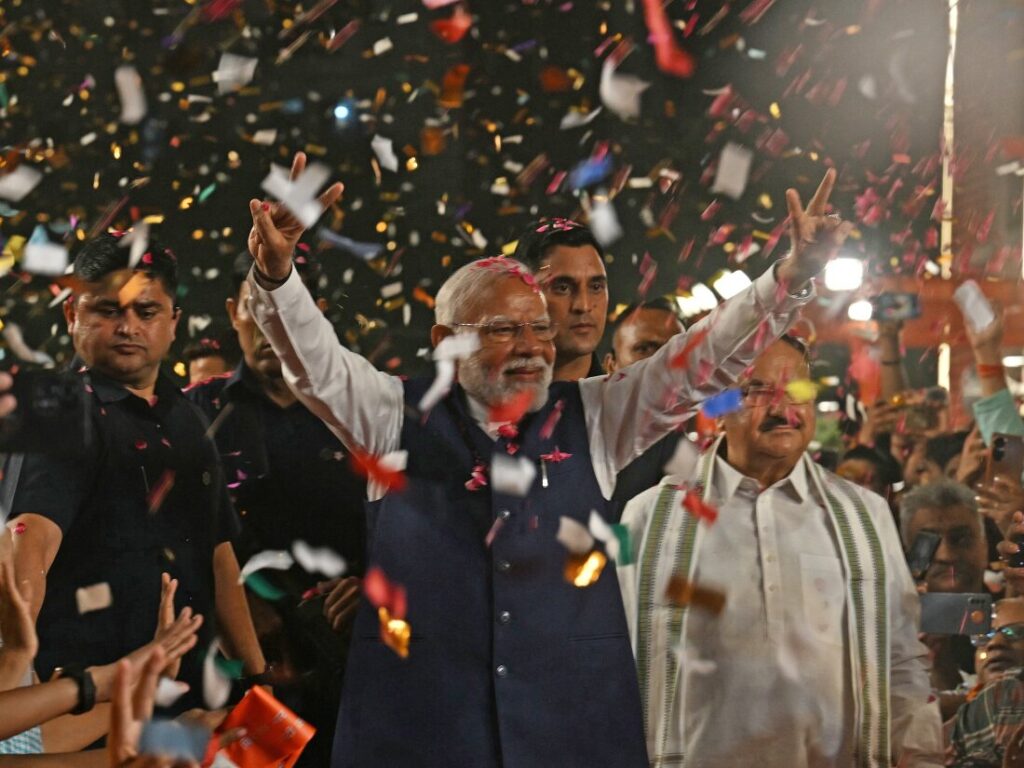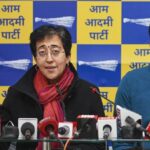Axis My India chairman Pradeep Gupta has projected a significant win for the Bharatiya Janata Party in the upcoming Delhi Assembly elections. According to Gupta’s analysis, the BJP is expected to secure 50 out of the 70 assembly seats, translating to a 48% vote share. In contrast, the Aam Aadmi Party , led by Arvind Kejriwal, is anticipated to win 20 seats with a 42% vote share.
This projection places the BJP ahead in the New Delhi constituency, where Kejriwal is contesting against the BJP’s Parvesh Verma and the Congress’s Sandeep Dikshit. The New Delhi seat has been a focal point, given Kejriwal’s prominence as the incumbent Chief Minister and AAP’s national convener.
The BJP’s projected resurgence in Delhi marks a notable shift from previous assembly elections, where AAP had maintained a stronghold. In the 2020 elections, AAP secured 62 seats, leaving the BJP with just eight. The current forecast suggests a reversal of fortunes, with the BJP gaining substantial ground.
Pradeep Gupta’s Axis My India has a track record of providing election forecasts, though not without occasional discrepancies. In the 2024 Lok Sabha elections, the firm’s exit polls overestimated the BJP’s performance, predicting 361-400 seats for the BJP-led alliance, while the actual tally was 240 seats. Gupta later acknowledged an “error of judgment” in resource deployment during the polling process. citeturn0search0
The AAP, which emerged from an anti-corruption movement in 2012, has governed Delhi for two consecutive terms since 2015. Arvind Kejriwal, a former civil servant turned politician, has been at the forefront of the party’s leadership. His administration has focused on initiatives in education, healthcare, and public services, garnering both praise and criticism.
The BJP’s campaign in Delhi has emphasized national issues, infrastructure development, and law and order. The party aims to capitalize on its national prominence and address local concerns to sway voters in the capital.
As the election approaches, all eyes are on the New Delhi constituency. Kejriwal’s challengers, Parvesh Verma of the BJP and Sandeep Dikshit of the Congress, bring their political legacies to the contest. Verma, the son of former Delhi Chief Minister Sahib Singh Verma, and Dikshit, the son of former Delhi Chief Minister Sheila Dikshit, add historical weight to the race.
The Congress party, which once dominated Delhi’s political landscape, has seen a decline in its influence over the past decade. In the 2020 assembly elections, the party failed to secure any seats. The entry of Sandeep Dikshit into the fray is viewed as an attempt to revive the party’s fortunes in the capital.
Political analysts suggest that the BJP’s projected gains could be attributed to several factors, including strategic candidate selection, focused campaigning, and potential shifts in voter sentiment. However, they also caution that election forecasts are inherently uncertain and actual results may vary.
The Delhi Assembly elections are being closely watched, not only for their immediate outcomes but also for their potential implications on national politics. A victory for the BJP in Delhi would bolster its position ahead of other state elections and the next general election. Conversely, a strong performance by AAP would reinforce its governance model and could influence political strategies in other regions.
As the political campaigns intensify, voters in Delhi are being presented with contrasting visions for the city’s future. The BJP emphasizes a blend of nationalistic policies and local development, while AAP focuses on grassroots governance and public welfare programs. The Congress seeks to regain its lost ground by appealing to traditional support bases and highlighting its legacy.
The final outcome will depend on various factors, including voter turnout, campaign effectiveness, and the resonance of party messages with the electorate. As Delhiites prepare to cast their votes, the political landscape remains dynamic, reflecting the diverse aspirations and concerns of the city’s residents.




 Kejriwal Alleges BJP Bid to Bribe AAP MLAs with ₹25 Cr Offers
Kejriwal Alleges BJP Bid to Bribe AAP MLAs with ₹25 Cr Offers 